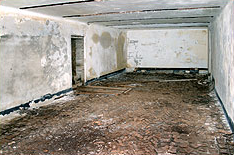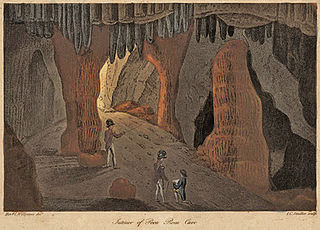
Llanito or Yanito is a form of Andalusian Spanish heavily laced with words from English and other languages, such as Ligurian; it is spoken in the British overseas territory of Gibraltar. It is commonly marked by a great deal of code switching between Andalusian Spanish and British English and by the use of Anglicisms and loanwords from other Mediterranean languages and dialects.

The Great Synagogue of Gibraltar, also known as Kahal Kadosh Sha'ar HaShamayim, is an Orthodox Jewish congregation and synagogue, located in the British overseas territory of Gibraltar. It was the first synagogue on the Iberian Peninsula to operate following the Jewish expulsions from Spain and Portugal in 1492 and 1497 respectively. Completed in the 1720s, it is the oldest synagogue in continuous use in Gibraltar and is Gibraltar's principal synagogue.

The Gibraltar Nature Reserve is a protected nature reserve in the British Overseas Territory of Gibraltar that covers over 40% of the territory's land area. It was established as the Upper Rock Nature Reserve in 1993 under the International Union for Conservation of Nature's category Ia and was last extended in 2013. It is known for its semi-wild population of Barbary macaques, and is an important resting point for migrating birds.

Lord Airey's Battery is an artillery battery in the British Overseas Territory of Gibraltar. It is located near the southern end of the Upper Rock Nature Reserve, just north of O'Hara's Battery. It was named after the Governor of Gibraltar, General Sir Richard Airey. Construction of the battery was completed in 1891. The first gun mounted on the battery was a 6-inch breech loading gun, which was replaced with a 9.2-inch Mark X BL gun by 1900. The gun at the battery was last fired in the 1970s. In 1997, it was discovered that Lord Airey's Shelter, adjacent to Lord Airey's Battery, was the site chosen for a covert World War II operation that entailed construction of a cave complex in the Rock of Gibraltar, to serve as an observation post. The battery is listed with the Gibraltar Heritage Trust.

Operation Tracer was a secret Second World War Royal Navy military operation in Gibraltar, a British Overseas Territory and military base. The impetus for the stay-behind plan was the 1940 scheme by Germany to capture Gibraltar, code-named Operation Felix. Operation Tracer was the brainchild of Rear Admiral John Henry Godfrey, the Director of the Naval Intelligence Division of the Admiralty.

Lord Airey's Shelter is a subterranean military shelter in the British Overseas Territory of Gibraltar. It is located near the southern end of the Upper Rock Nature Reserve, adjacent to Lord Airey's Battery. It was named after the Governor of Gibraltar, General Sir Richard Airey. The tunnel system for the shelter was chosen as the site for the highly classified, Second World War military operation known as Operation Tracer.

Ibex Cave is a limestone cave on the Rock of Gibraltar which has yielded stone artifacts of Mousterian tradition. It was discovered in 1975. It is so named as an ibex skull was found within the cave which would have been hunted by the Neanderthals of Gibraltar thousands of years ago. Ibex Cave was named and excavated by the Gibraltar Museum in 1994. Its first formal description was in 1999. It is protected by the Heritage and Antiquities Act 2018 of the Government of Gibraltar.

Martin's Cave is a cave in the British Overseas Territory of Gibraltar. It opens on the eastern cliffs of the Rock of Gibraltar, below its summit at O'Hara's Battery. It is an ancient sea cave, though it is now located over 700 feet (210 m) above the shore of the Mediterranean Sea. It is only accessible because Martin's Path was constructed.

Poca Roca Cave is a cave in the British Overseas Territory of Gibraltar.

Cave S or Sewell's Cave is a limestone cave in the British Overseas Territory of Gibraltar. It is located on the eastern side of the Rock of Gibraltar, near Holy Boy's Cave. Prehistoric human remains were found in the cave in 1910, and the cave is listed by the Government of Gibraltar as a Palaeolithic site.
Collin's Cave is a cave in the British Overseas Territory of Gibraltar. It is located in the northeastern part of the Rock, between Reservoir Fissure and Middle Hill Cave. The cave is above Catalan Bay. It is one of the many caves in Gibraltar. It is believed to be archaeologically important and is listed in the government's Heritage and Antiquities Act 2018.
Fig Tree Cave is a cave in the British Overseas Territory of Gibraltar. It is located on the eastern cliffs of the Rock of Gibraltar, not far from Martin's Cave within the Upper Rock Nature Reserve. It is listed in the Heritage and Antiquities Act 2018 by the Government of Gibraltar.

The Goat's Hair Twin Caves are in the British Overseas Territory of Gibraltar. The caves are listed in the Heritage and Antiquities Act as they are sites of Palaeolithic and Neolithic archaeology.

Holy Boy's Cave is a cave in the British Overseas Territory of Gibraltar. It is one of the largest of the many caves in Gibraltar and it is on the eastern side of the Rock, near Cave S. It is believed to be archaeologically important and is listed in the Heritage and Antiquities Act 2018.
Judge's Cave is a cave in the British Overseas Territory of Gibraltar. Human remains dated to the late prehistoric period have been unearthed in the cave. This Neolithic Shelter is protected by the law of Gibraltar.

Mammoth Cave or Signal Station Cave is in the British Overseas Territory of Gibraltar. It is one of Gibraltar's largest caves and a Neolithic site. It is listed in the Heritage and Antiquities Act 2018.
Devil's Tower Cave is a cave in the British Overseas Territory of Gibraltar. Archaeologist Dorothy Garrod found a Neanderthal skull in the cave which, together with other evidence found in this cave, shows it was used as a rock shelter by the Neanderthals of Gibraltar.
Devil's Fall is a cave in the British Overseas Territory of Gibraltar. It was a prehistotic shelter and is listed and protected by the Heritage and Antiquities Act 2018.

Wilson's Cave is a cave in the British Overseas Territory of Gibraltar.

Hayne's Cave Battery is the remains of two gun positions that made up an artillery battery on the west side of the British Overseas Territory of Gibraltar at Hayne's Cave. Gun emplacements can still be visited at this cave.
















